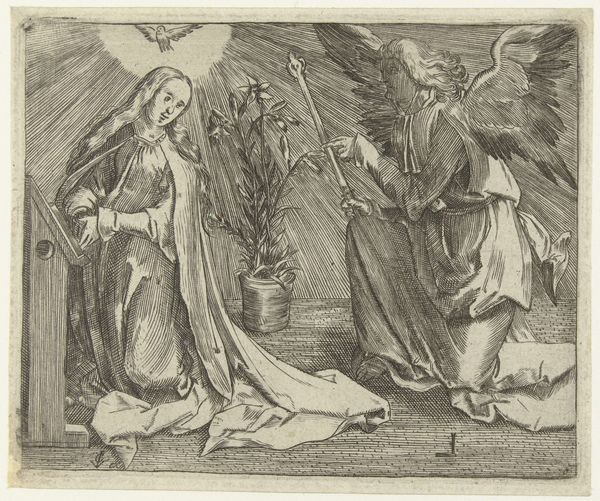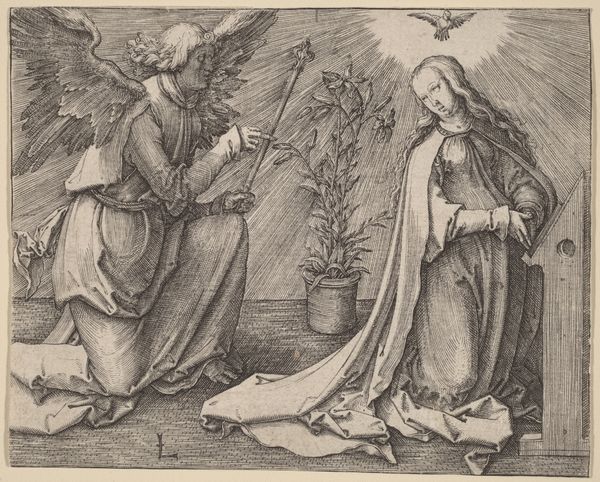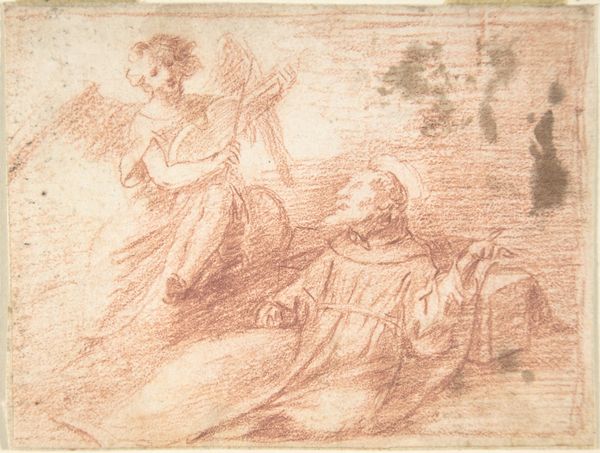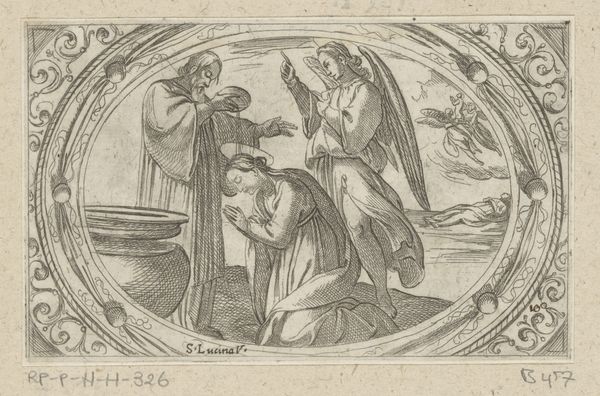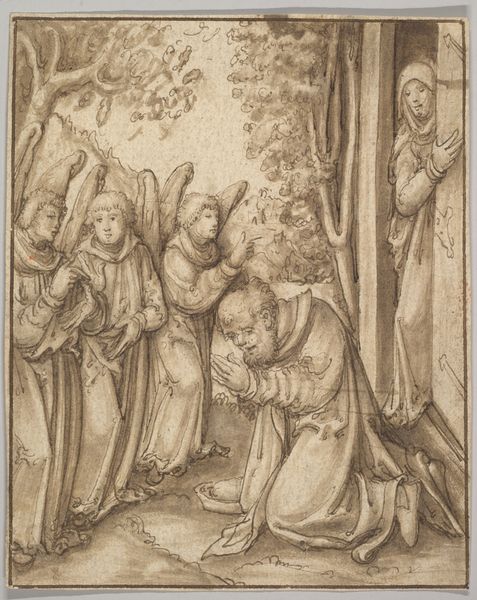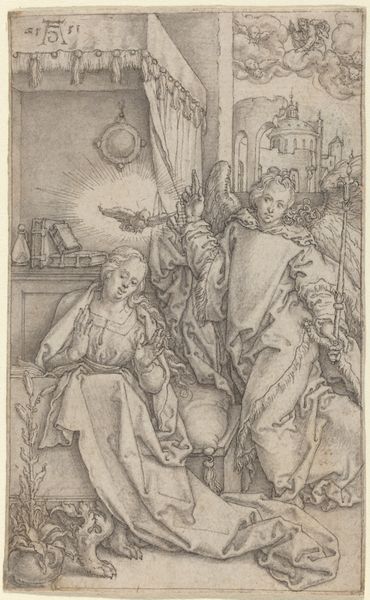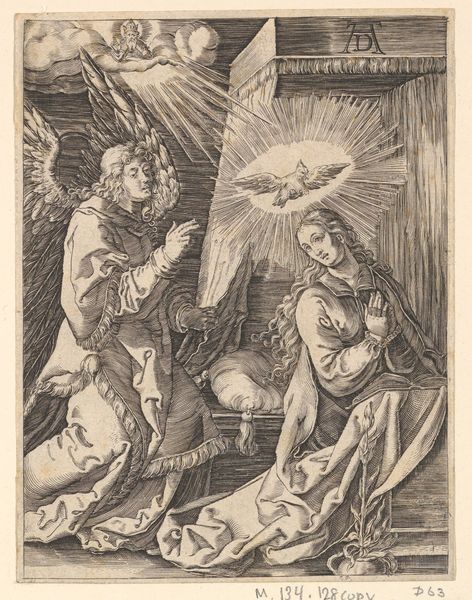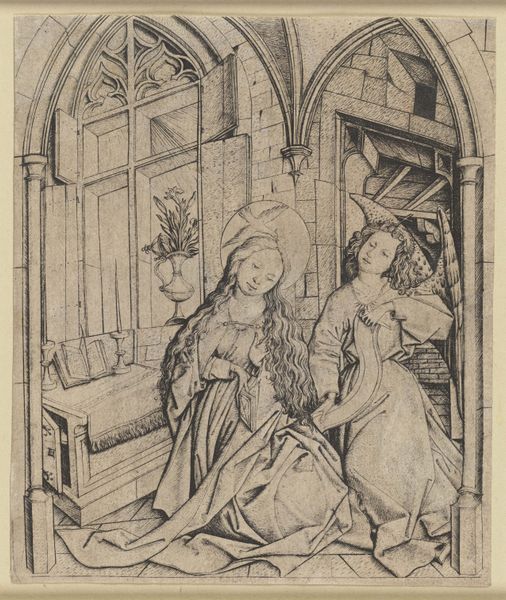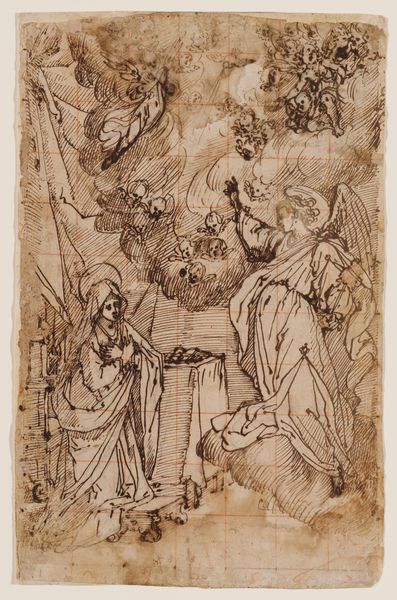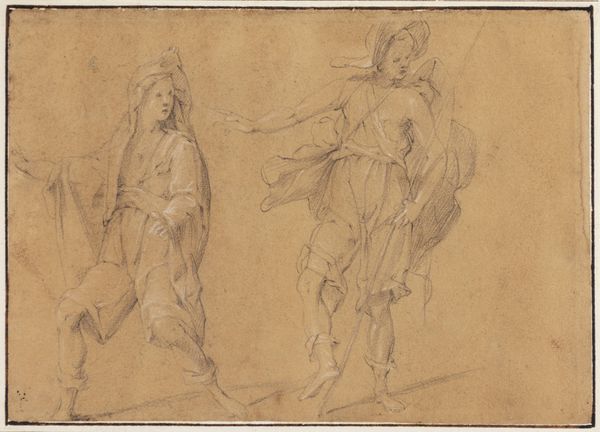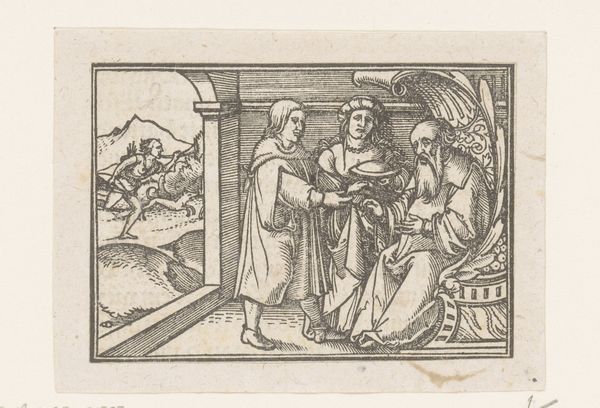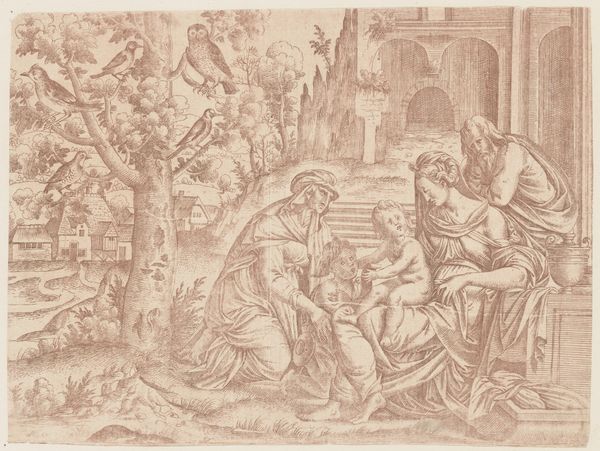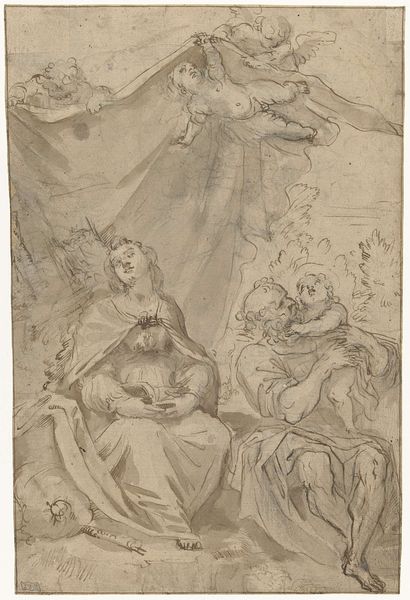
drawing, print, engraving
#
drawing
# print
#
landscape
#
figuration
#
11_renaissance
#
history-painting
#
northern-renaissance
#
engraving
Dimensions: sheet: 3 1/2 x 4 3/8 in. (8.9 x 11.1 cm)
Copyright: Public Domain
Curator: This engraving is titled "The Annunciation" and comes to us from Lucas van Leyden, dating to around 1511 to 1521. Editor: The somber stillness hits me first. Despite the momentous event, there's an undeniable quiet, a muted quality. It speaks volumes about the weight placed on Mary. Curator: Leyden masterfully employs symbols here, drawing upon centuries of visual tradition. The lily, of course, represents Mary's purity, and the dove embodies the Holy Spirit. We also see a subtle detail above her, rays of light descending from heaven that highlight her acceptance of God’s will. These visual cues speak directly to cultural memory, linking the viewer to a lineage of faith. Editor: And isn't the entire narrative loaded with sociopolitical implications regarding gender roles and expectations? Mary’s humble acceptance is almost weaponized, isn’t it? Women were held to this impossibly pure, submissive standard. Consider how "the Annunciation" has functioned through history. How does the emphasis on Mary’s virginity, and the power structure, normalize the expectation of female docility? Curator: It’s a powerful point, yes. The angel, kneeling but still dominant with the staff of authority, echoes that hierarchy. The staff in Gabriel’s hand reinforces his divine assignment; notice how it's the same height as Mary. Even in humility, a quiet strength exists within her portrayal. This depiction resonates in its visual construction with traditional artistic codes. Editor: Yet that constructed ideal serves power, wouldn't you say? Consider Mary’s lack of agency in this depiction, this historical demand for her role as a vessel and how that narrative reflects society. Also, I wonder about class. How was this depiction perceived, what did it mean to lay people? Curator: Prints allowed these religious messages to become widely accessible. These smaller, more affordable works democratized images, spreading iconography beyond the elite patrons. This image would have served as a vital tool for teaching biblical narratives and shaping faith across social strata. Editor: The accessibility changed, but the message remains tied to its original biases. Still, thinking of this moment through an intersectional lens gives it a different resonance. Thanks for illuminating both artistic symbols and its layered meaning. Curator: A fascinating reflection indeed. Thank you for adding a contemporary framework through which to reconsider its historical and ongoing impacts.
Comments
No comments
Be the first to comment and join the conversation on the ultimate creative platform.
